Additional benefits of the Domestic/International Split of Milenomics.
Milenomics has a clear differentiation between international mileage programs such as UA, AA, and US, and those used for domestic travel, such as BA, WN, and DL. I’ve mentioned that you should look into your own travel patterns, and your demand schedule and see if these three can work for you. If they do, this post will show you how to wring out even more value from these miles, and how these specific programs have been picked to save you money in the process.
We’ve covered this in two different posts, First the discussion of the “Principle of Mileage Conservation.” Secondly we talked about using these miles for our domestic travels in the post entitled “The Low Level Hedge.”
Milenomics has picked these programs for very specific reasons. The first reason, and the one we’ve already covered, is that they aren’t very good programs for international travel. Delta Miles are actually not too bad for international trips, but most people would prefer something a little easier to search for award flights with. Their website is absolutely awful. In fact as I’ve mentioned numerous times, the best site to search for Delta awards at low level is actually the www.alaskaair.com site. Soutwest is domestic only (if you exclude AirTran flights), and Avios start to fall apart with longer flights, especially those with lots of stops.
These three programs each have key ways they save you money as well as miles, and I’ll outline those today. In addition they complement each other very well, creating what I like to call the “Hybrid System” for award booking.
Money Saving Benefits of Each Program
- British Airways Avios: We’ve discussed how Avios allow you to fly AA and AS for less miles than either program both here, and here. That we already know. Today we learn about the cost saving features of Avios. Avios represent a savings of not just miles, but also cash. BA Avios have no close in ticketing fee. When it comes time to ticket an AA flight, and you’re within 21 days of the flight, AA charges you $75 per person for the booking. This is waived for AA Gold, Plat, and EXP plat. We’re booking with Avios and eliminating this fee–A very #BYOE type of move. The trade off is that changes aren’t allowed with Avios–but if your flight is close in you’re much less likely to need to make a change. And using less miles, and less money is a win-win in anyone’s book.
- Southwest Rapid Reward Points: We’ve covered the flexibility of these points–if there is a seat for sale there is a seat for redemption. We’ve also loosely talked about the companion pass. Today we look at the area that Southwest can save you even more: No change fees. No Close in ticketing fees. In addition you bags cost you $0, with or without Elite status. Again very #BYOE. You can speculatively book seats, if the price drops, you can cancel and rebook at the lower point level. When you aren’t sure you’ll be taking a flight, WN RR points are the flexible currency for you.
- Delta: I’m starting to sound like a broken record: Delta has no close in ticketing fee either. What this means is you can use any of the three programs I’ve listed for Domestic travel, and never pay a close in ticket fee. You could leave tomorrow with Delta miles, and pay just the September 11th fees. Again this saves you $75 on tickets issued within 21 days. Delta also allows extremely flexible routing, and it is this fact that allows these programs to combine into something greater than the sum of its parts.
Milenomics Case Study. LAX-SEA and LAX-MCO
Lets assume that you’ve got the following flights on your domestic demand schedule. You need to be in seattle (from LAX) this weekend, and then In February of next year you need to be in Orlando. Because the Seattle flight is so close, prices have spiked, and you’d rather book with miles than cash.
With AA miles, or UA miles, you’d book LAX-SEA-LAX for 25,000 miles, and because it is within 21 days you’d pay $75 extra per person, a total of $85 for this flight.
You’d also book LAX-MCO for 25,000 per person. Fortunately it is far enough ahead of time that you would only pay the $10 per person for the flight.
Total spent: 50,000 miles and $95.
The Hybrid System:
The Hybrid System takes advantage of Delta offering one stopover and an open jaw on some domestic award tickets. This means you would be able to fly this Friday from LAX-SEA with Avios, 7,500 per person, plus $5 per person.
You would then book the return as part of a Delta ticket, SEA-LAX this Sunday the 22nd and use your stopover in LAX.
Stop in LAX for months, days, weeks, and then continue LAX-MCO as your destination, and a week or two later fly back MCO-LAX all for the price of one ticket, with no close in fees either.
Total would be 32,500(7,500 avios +25,000 Delta Miles) for a Round Trip LAX-SEA, and a Round Trip LAX-MCO. There’s no close in fees. To do this trip with AA miles would cost you $95 and 50,000 miles
You’ve just saved yourself $75 and 17,500 miles using these programs instead of AA, UA, or anyone else. Even using Avios alone for this trip would cost you more (40,000) than the Hybrid System.
The same is possible with Southwest RR points. If the destination is close and the flight cheap enough you could book the first 1 way with RR Points, and then the return with DL. If you have a Companion pass this will make things even cheaper.
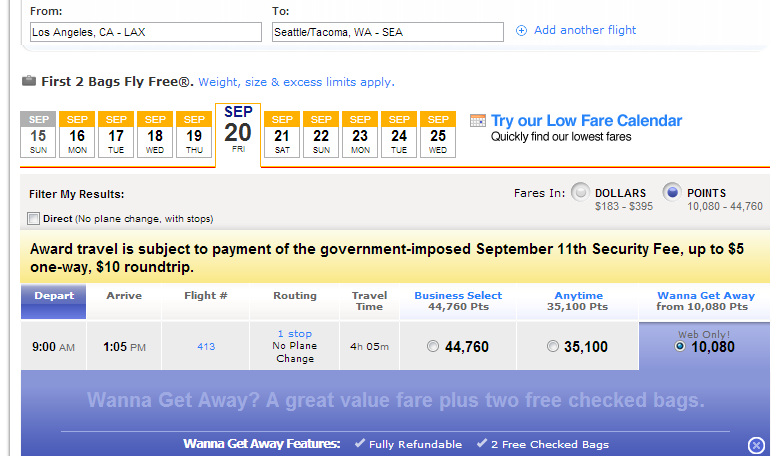
- The Hybrid System works when a city pair is serviced between either Avios (AA/AS) or Southwest and Delta. In addition the route has to be a legal one in Delta’s eyes. This usually means your stop needs to be at a DL hub. (More in this in a future post).
Two More examples are:
SEA-LAX stop LAX-BOS-LAX:
These flights work in reverse as well, so you could fly LAX-BOS-LAX =STOP= and then continue on to SEA, and book a return flight with Avios. The beauty of using these three programs is that whichever way you start the trip you pay no close in booking fee. This also works for First class bookings, and you could do LAX-JFK instead and fly Delta’s flat bed as part of this.
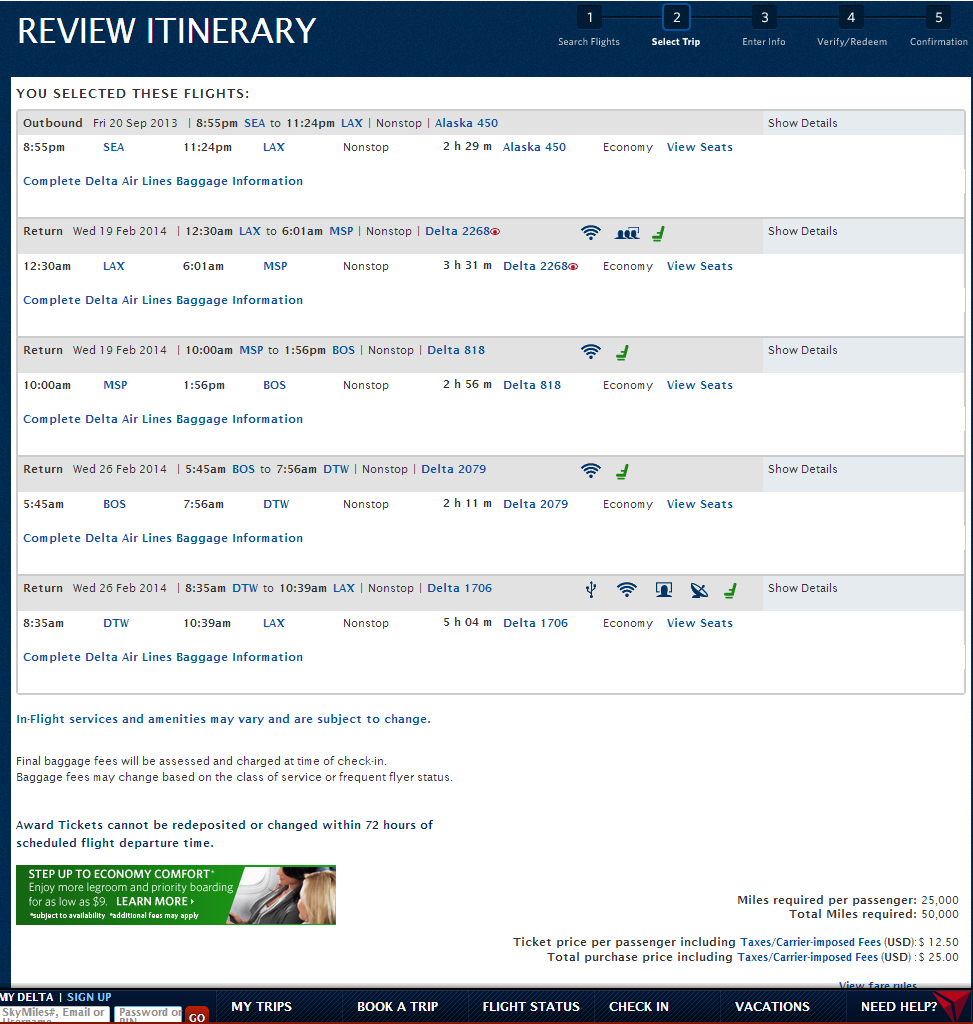
An East Coast Example ATL-BOS-ATL-SFO-ATL:
The system works on the east coast as well, but the options get tougher. In the below example we’re buying ATL-BOS with WN RR miles, and then the return with Delta Skymiles.
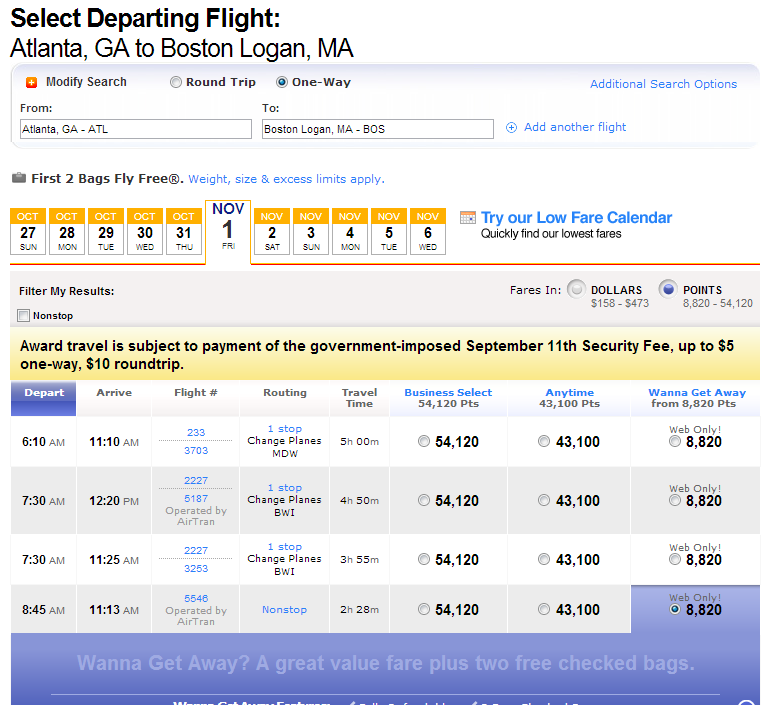
For the trip we would use 8,820 WN RR points, plus 25,000 DL Skymiles. Total spent would be 33,820 and $15 or so in September 11 fees. The flight back is a nonstop on DL metal, and then a stop in ATL for days/weeks/months, before continuing on to the west coast.
Can You Take Advantage of the Hybrid System?
Now would be a good time to take a look at your domestic demand schedule, and see what trips you can consolidate in this manner. Using Avios + DL or WN + DL you can go farther for less. Look for areas where your trips overlap–and consolidate those overlaps into 1-one way, and a Round trip with a stopover whenever possible. As I mentioned the route must be legal in Delta’s eyes, and this post is getting a bit long, so I’ll have to cover that more in another post. Basics for now, try the Hybrid System out, and if it works, and prices as one flight, great, if it prices as 2 flights on delta.com you’ll not be able to use it.
Having these three programs for domestic travel allows you to decide on taking a trip a year, 6 months, or 6 days before you leave for it, all for no additional out of pocket expense. Often times we forget that the fees in a program can take away the savings we get from using Miles.
Milenomics Hates fees. You’ve heard me say that before, but I want to stress it again. Fees eat up money you can be using for your travel. Instead it just gets sucked into a black hole. Follow @Milenomics on twitter, or subscribe via email to fly farther for less money (and less miles).

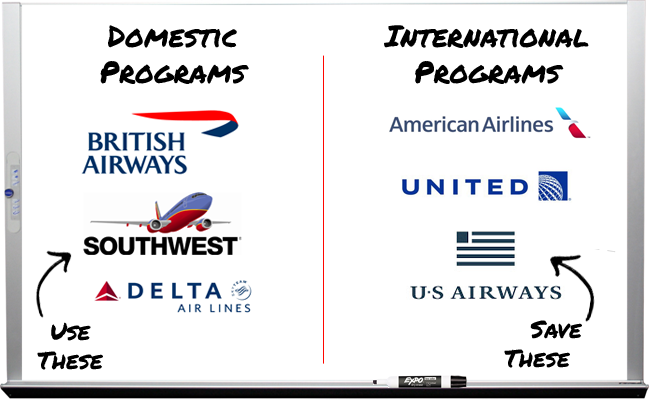

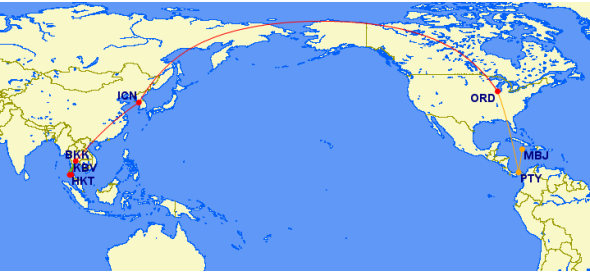
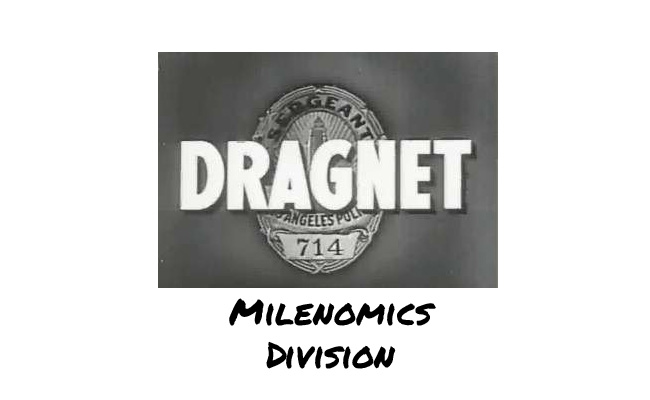
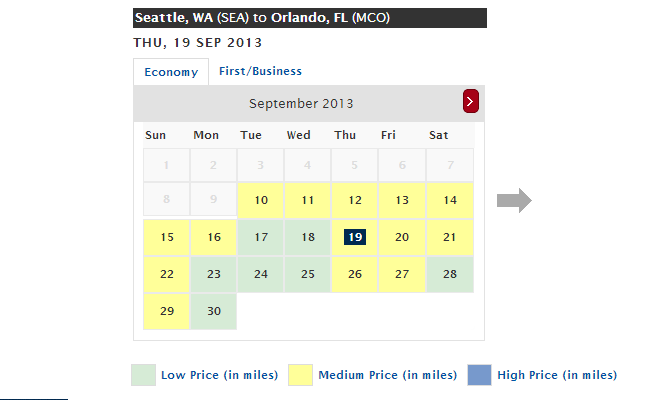
I live in MSP, a DL hub, which I have considered as a liability. I am also a big-time fan of Southwest and the Companion Pass. This post gives me some hope. Maybe those Skypesos could be put to good use . . . Now I have some of the similar options that ORD people have with AA and United. Simple, easy, deliverable domestic travel. Great post. This should be a top 10 post for mile bloggers this year. Well done and thank you.
great post!
help would be greatly appreciated though on working out DL legal routings. and this also includes int’l. their engine is very funky on pricing. sometimes i do not understand it- e.g. playing around with mexico routings and which us cities you can route through and include a stopover. i have worked on this exact scenario with mexico to try to understand DL legal routings. you’re right- you have to go through a hub. but it would be great to provide further details on that.
M: I’ll try to revisit it with a better answer if I can–the only way I know of right now is to use expert flyer and look up the routing to see what is legal. There is a free 5 day trial to see how you like the service. Might help you to sign up and look up some routes there. Without knowing the cities you’re looking at I can’t be more help.
Don’t forget DL sometimes pulls the MPM card out of their back pocket to deny international award tickets.
I’m a little confused.. For the east coast trip:
One way on southwest/avios to Boston.
Round trip:
Outbound from Boston to Atlanta (stopover?)
Return has another stopover in SFO? (I don’t see an open jaw..)
It doesn’t make sense to me. The portal sees return as
Atl-sfo-lax-atl??? That’s confusing.. The return is from atl-atl basically?
And then it doesn’t end back in Boston? So how is that a “return”
Sorry 🙁 newbie alert! :))
and if the outbound is actually boston-atl-sfo, and atl the stopover, why is the return sfo-lax-atl, and not sfo-atl? Isn’t the lax superfluous, and won’t it add to the cost of the trip?
No problem Alex. I’ll step through it. The BOS-ATL-SFO example assumes you live in ATL. Boston would be your “free” one way. You’d fly there with another carrier, someone who allows one ways, and ideally flies ATL-BOS. This would be the only cost for the ATL-BOS-ATL flights because you’d then book BOS-ATL as part of the BOS-ATL (STOP) ATL-SFO trip. SFO-LAX-ATL on the return was probably because I couldn’t find low level SFO-ATL direct. You’re correct that the extra leg is not needed.
The basics of this idea are to string together trips whenever possible. Make sure you read about the supply and demand of miles, as well as demand schedules. Knowing where and when you want to go places lets you put together more than on trip and save miles (and money). That’s Milenomics.
thanks a bunch for clarifying!! 🙂 sfo-lax-atl would take more points to book than sfo-atl, wouldn’t it? I didn’t know you could reroute to get low level availability..
No problem. You’re not charged any more points for rerouting. In fact direct and nonstop flights usually cost less miles in programs which charge differently for different distance flights (BA and ANA). The good part about that is you can construct all kinds of options, like SFO-SLC-ATL. The bad part is that connections eat up your time, and cost you money: http://www.milenomics.com/2013/10/trading-time-miles-make-sense/
For more on route construction see here: http://www.milenomics.com/tag/routes/.